Ayoob: Secrets of Cross Draw — Mistake or CCW Masterstroke?
December 23rd, 2022
9 minute read
Cross draw — also spelled “crossdraw or cross-draw,” there doesn’t seem to be an agreed-upon format in the world of gun publications — means carrying a handgun on the side of the body opposite the gun hand, butt forward. Though it has largely fallen out of fashion in most quarters, it still has its advocates … and still has its place.
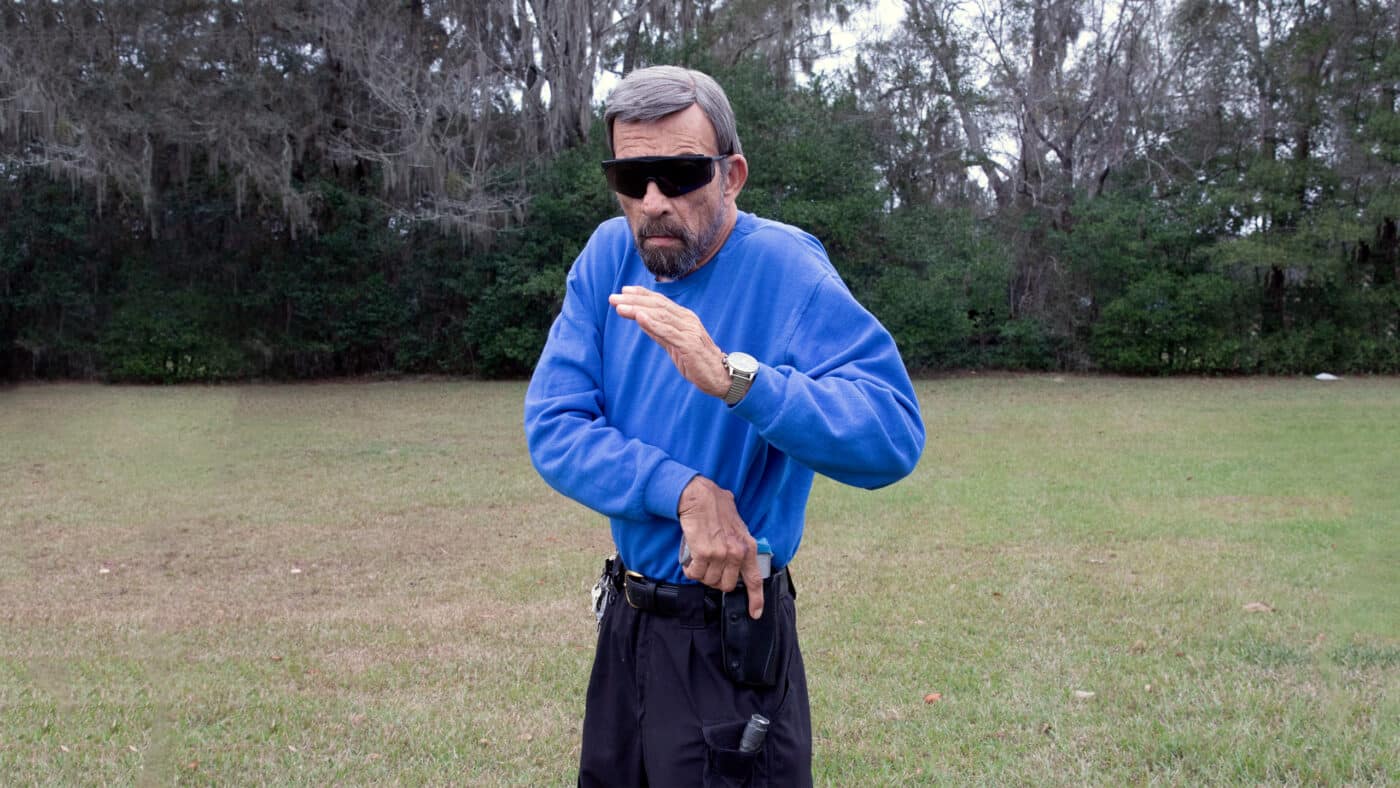
More than one place, actually … .
A Brief History
Ever since we’ve had handguns, some of us have carried them in this fashion. Portraits of pirates from centuries past, cowboys and cavalrymen in the American West of the nineteenth century, and cops well into the 20th show cross draw carry in use.
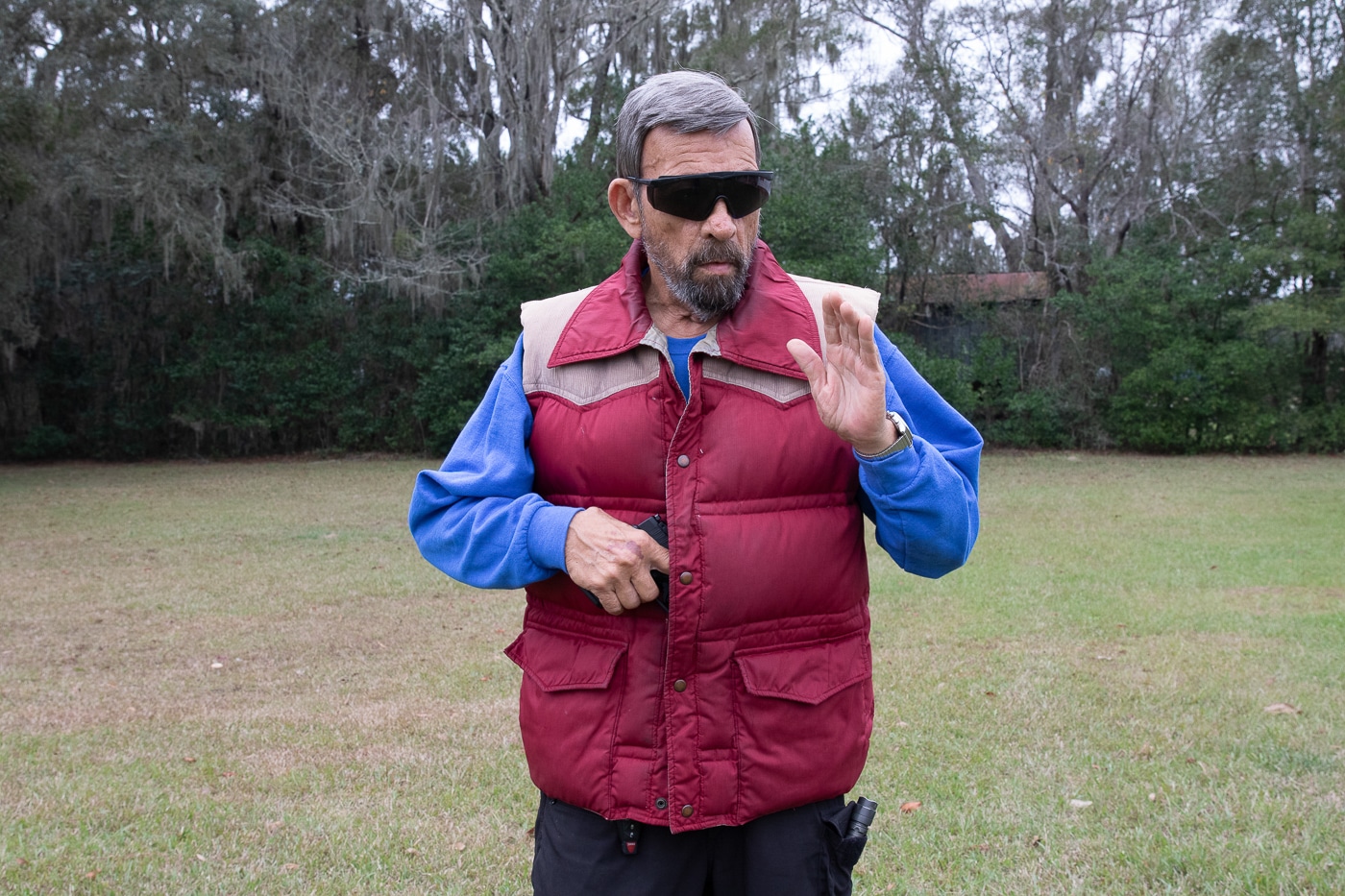
The bulky single-shot pistols of the Revolutionary War were often carried so. Cross draw was quite common among cowboys and lawmen in the Old West. One reason was that the horse was a primary form of locomotion, and when you sit in a saddle your legs splay somewhat outward. A pistol on the strong side bearing on the thigh is going to have the leg pressing the barrel outward, which means the grip area is levered inward. Carried high on the hip, this can be uncomfortable, and in any case requires the horseman to rock his head and torso to his weak-hand side to clear a path and gain necessary range of movement to draw his revolver.
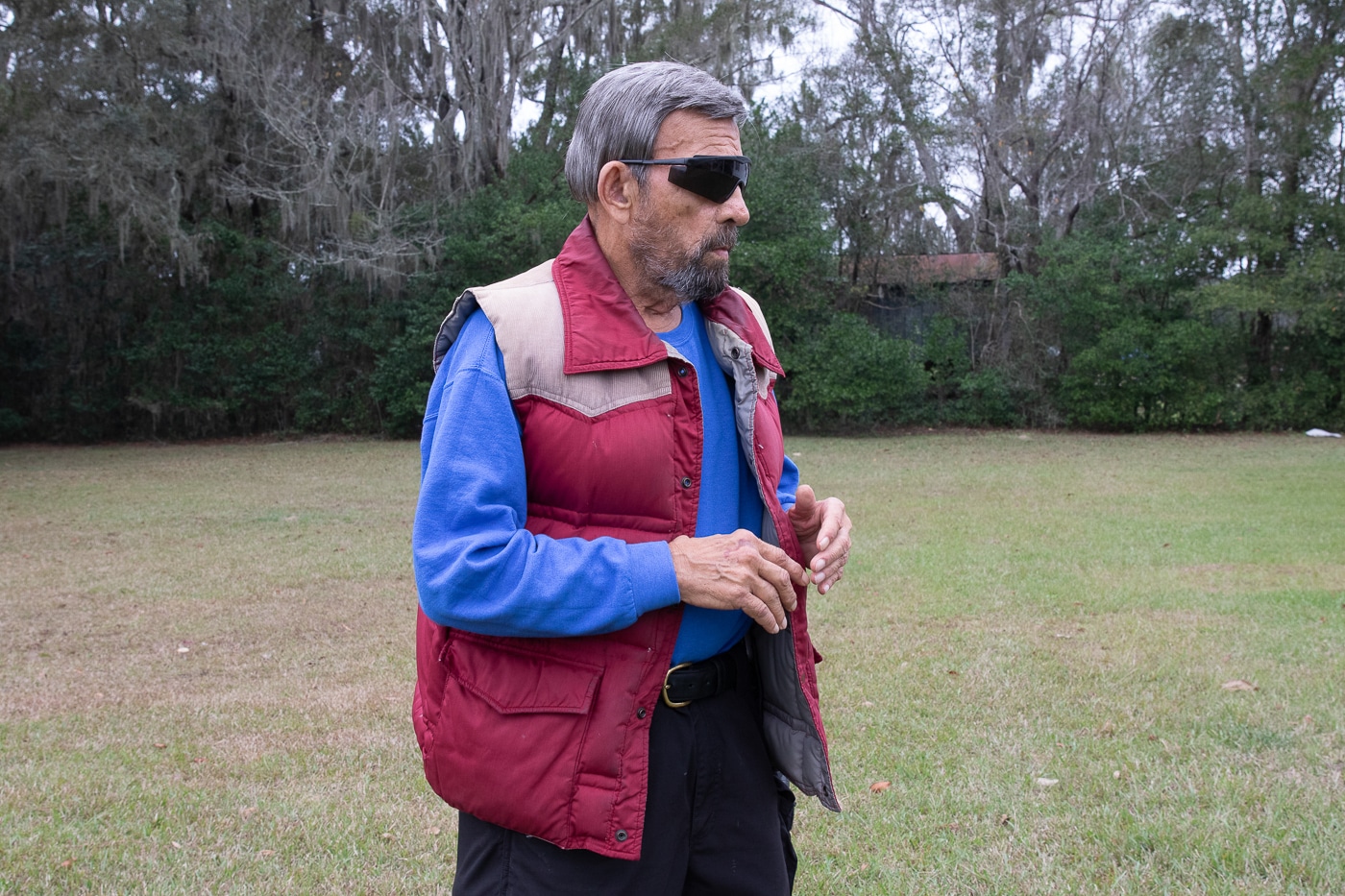
Butt forward a bit ahead of the hip on the side opposite the gun hand was faster, probably more comfortable for every moment in the saddle, and didn’t “telegraph the draw” to an opponent by having to lean head and upper body sideways while in the saddle.
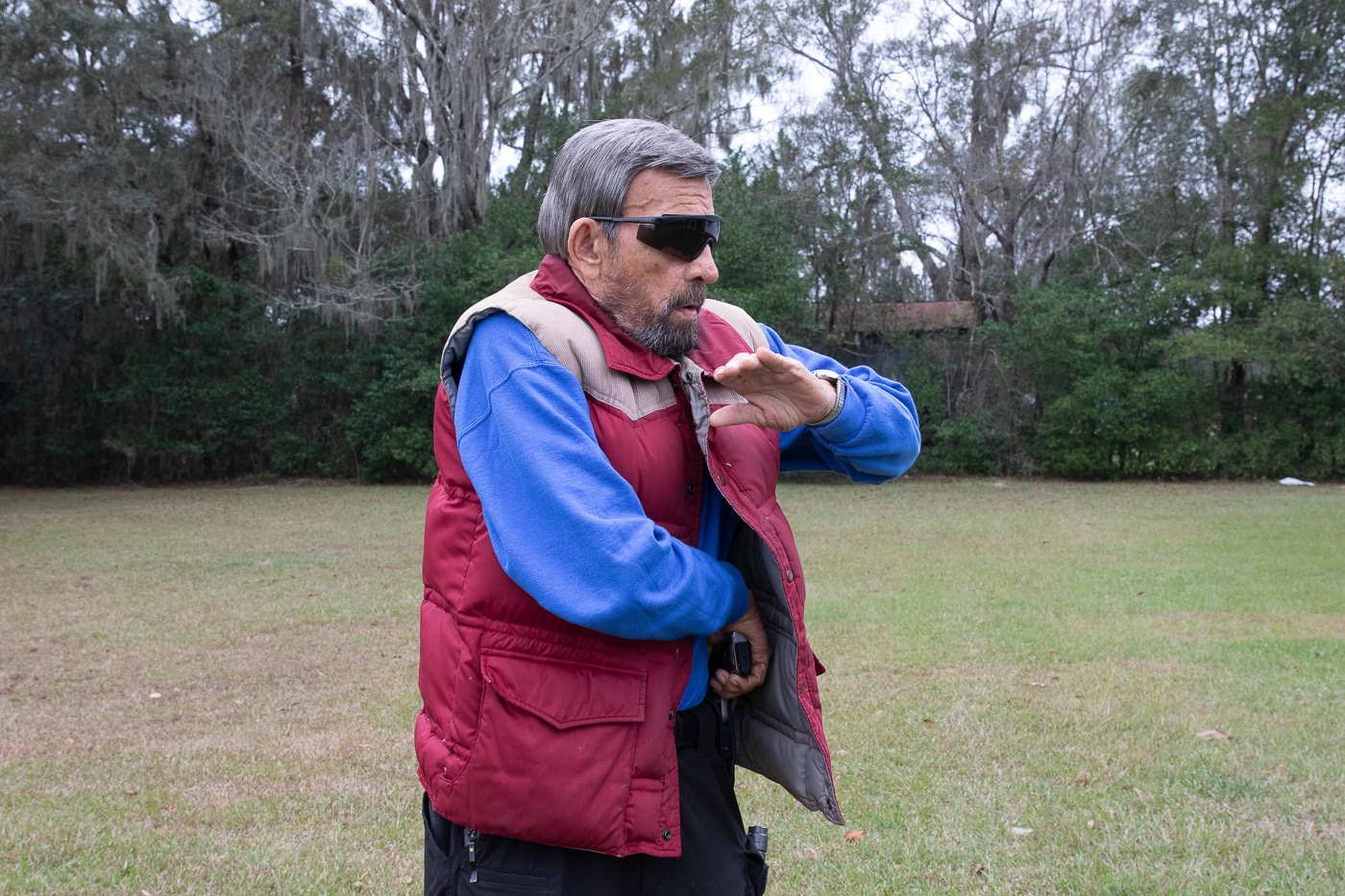
In the Civil War and in the American Frontier Wars, it was extremely common to see mounted soldiers with a saber on their left side if they were right-handed, and their service revolver in a flapped holster on their right side, butt forward. The reason? Cavalry doctrine of the time, some historians say, was that the saber was the primary weapon of the cavalryman in close combat, and its length required an across-the-body draw while its weight required the dominant hand to employ it.
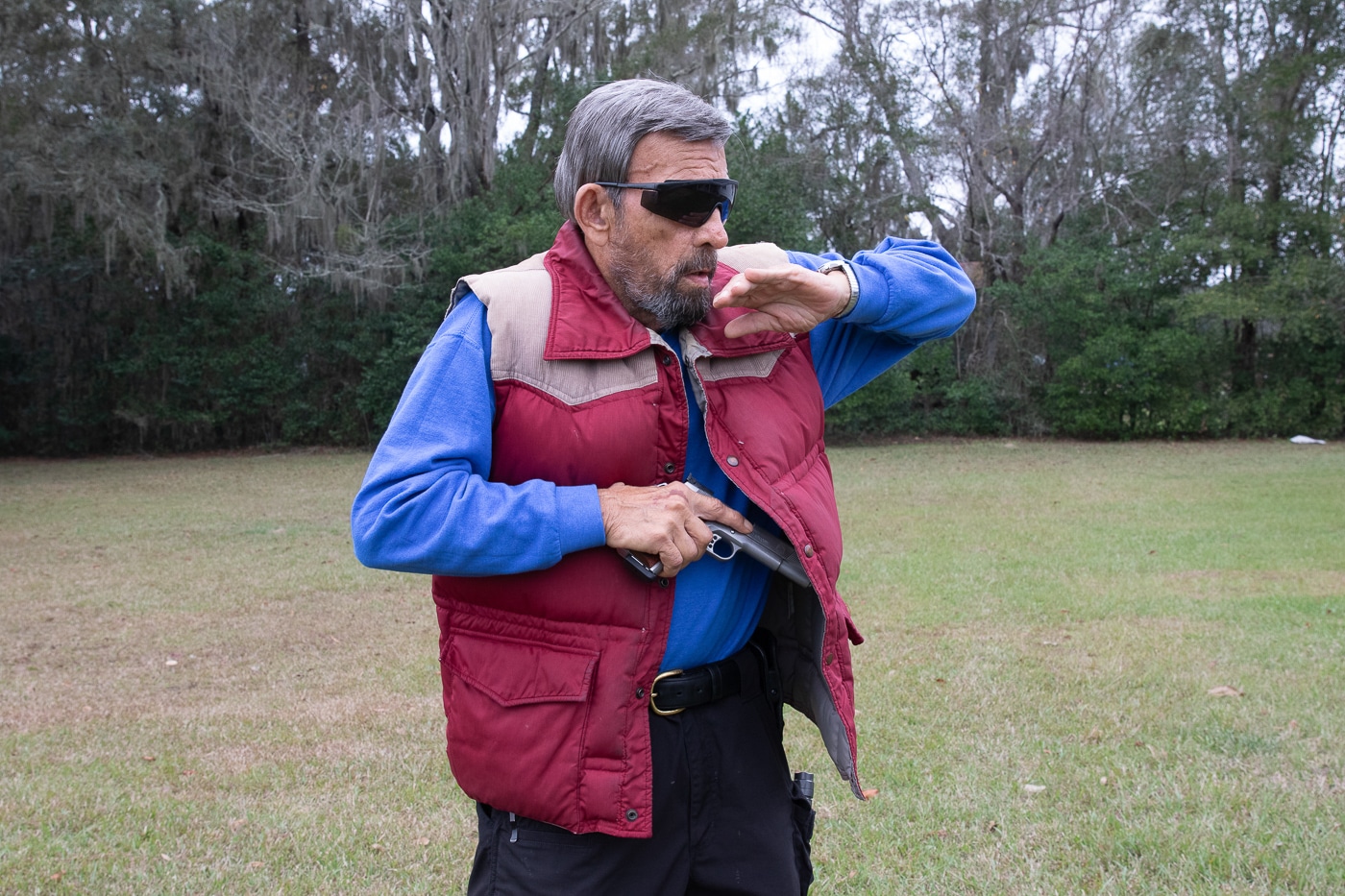
The revolver butt-forward on the right hip, accessible cross draw to the left hand, was perhaps seen as a weapon that required less finesse to employ and was thus better suited for the non-dominant hand. (Smart cavalrymen who disagreed with that theory learned to draw from butt-forward on their dominant hand side, and we’ll discuss that “cavalry draw” more.)
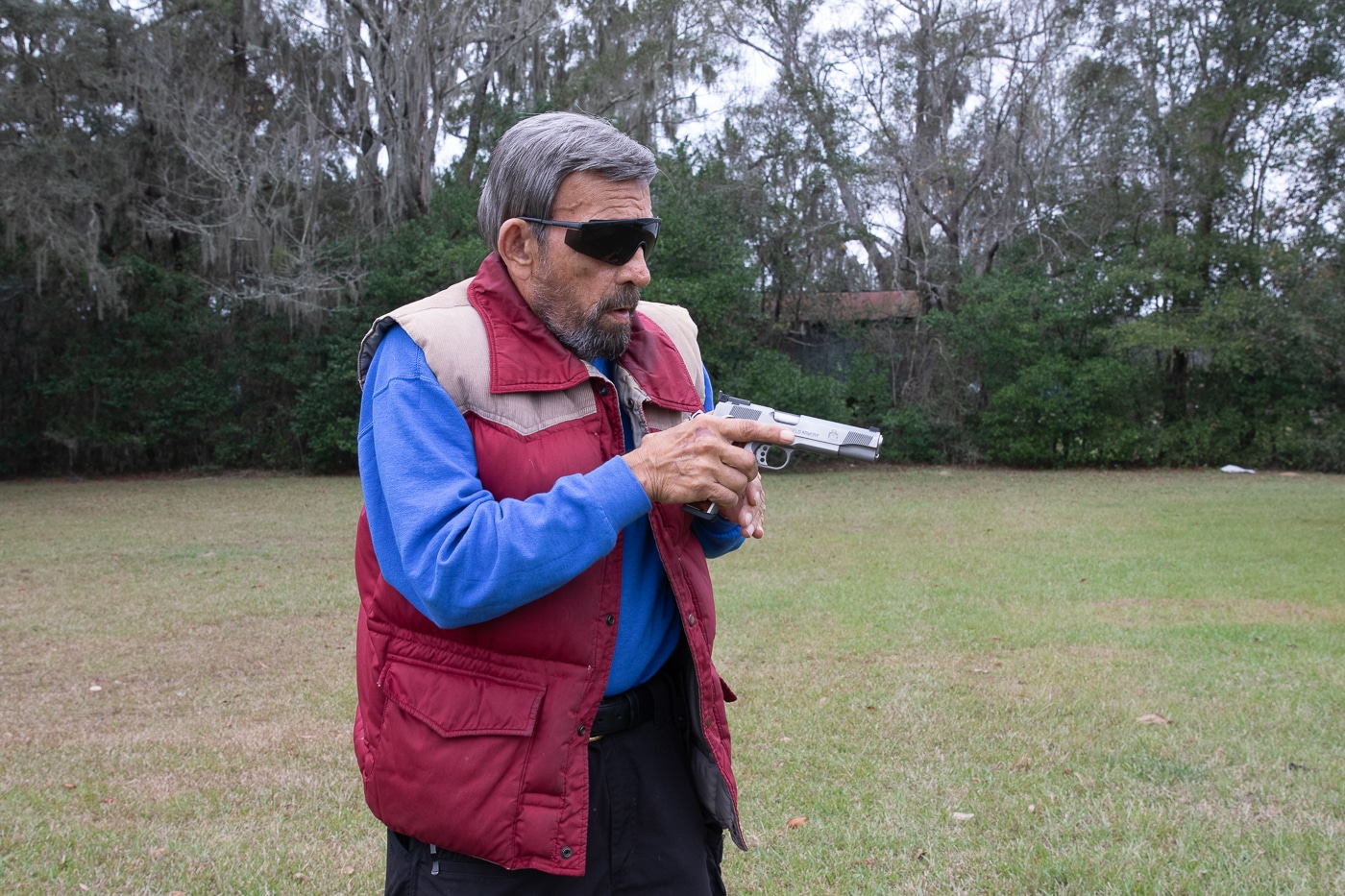
Among lawmen and gunfighters alike on the Western frontier of the late 19th century, cross draw carry was quite common. Doc Holliday was said to favor it … lawman Commodore Perry carried low cross draw on his left hip … and John Wesley Hardin fashioned a vest that carried two revolvers butt-forward, set up for cross draw with either hand. Wild Bill Hickok famously carried his twin Navy Colts butt forward, but is believed to have used that “cavalry draw” we’ll explain in more detail shortly.
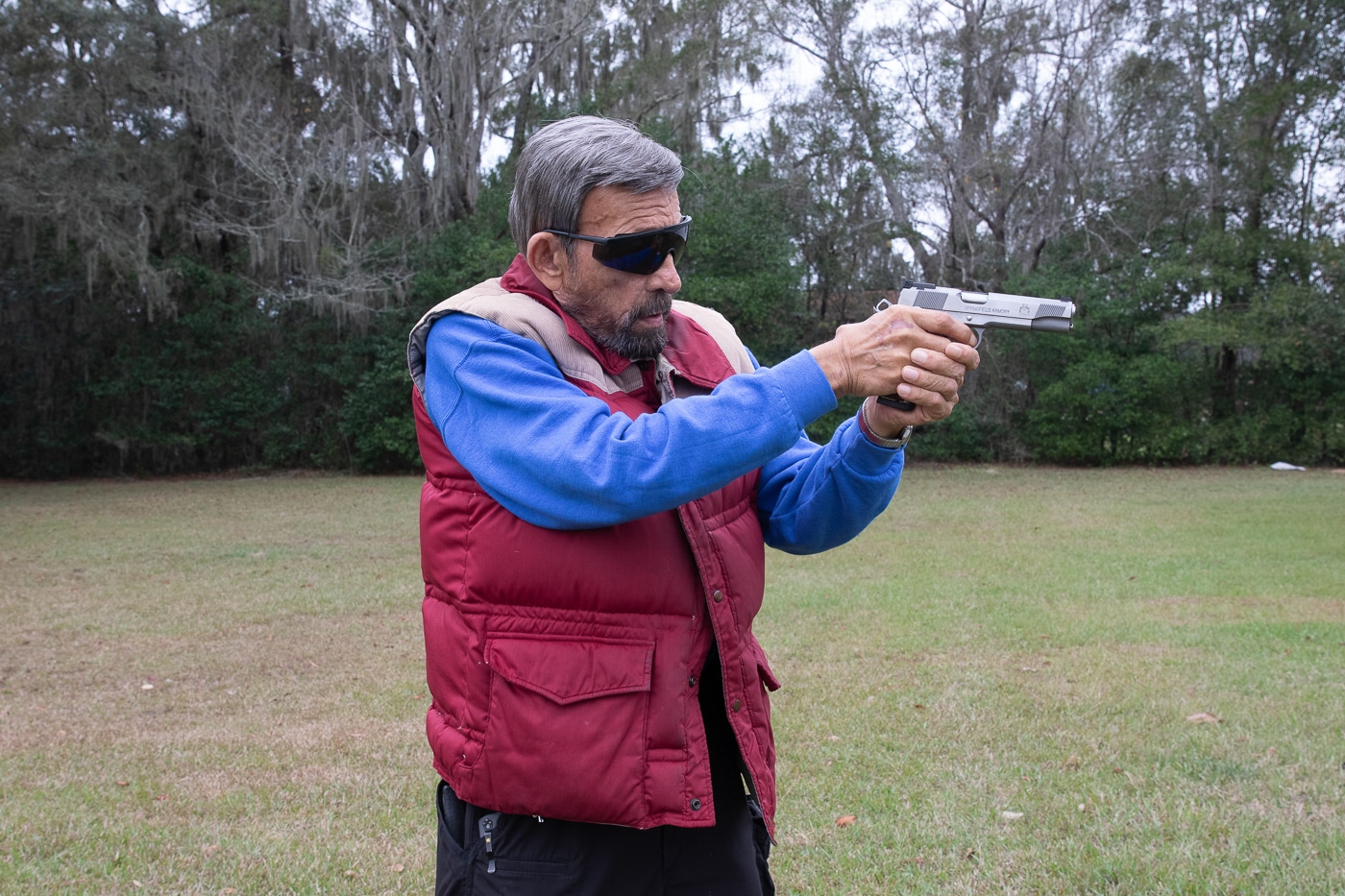
Looking Ahead
Fast forward into the 20th century. Lots of cops carried cross draw, especially with the longer 6” barrel service revolvers that were popular in the first two quarters. When patrol cars came into service, the high-riding cross draw was more comfortable when seated and easier to reach. In a time when patrol car “cages” had not yet been installed in police cars nor had seat belts, arrested suspects often rode in the front seat, and for a right-handed officer a cross draw kept his body between driver’s door and passenger, and his gun out of the suspect’s reach.
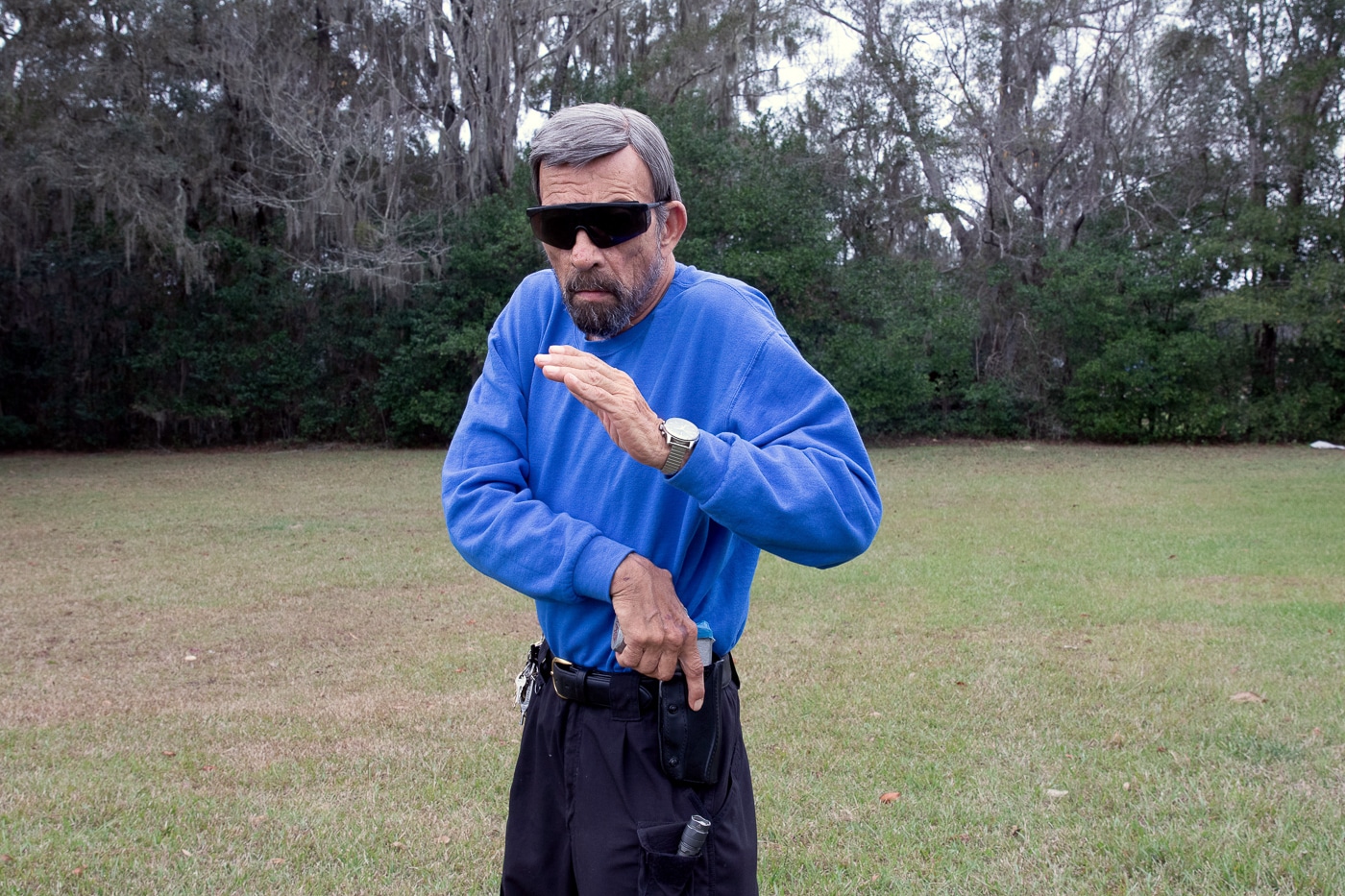
By the 1960’s and early 1970’s, there were still police departments that standardized on cross draw: Metro-Dade Police in Miami, and the state troopers of Florida, Colorado, Washington, Illinois and Iowa, among others. The coming of snatch-resistant “security holsters,” all designed for strong-side hip carry, put the final stake in the heart of the cross draw holster for uniformed police in our country.
Plainclothes detectives were the last cops to cling to the cross draw. Now, we can’t discuss “gun culture” in America without mentioning Hollywood. That sector was largely influenced by LAPD, which for a very long time required plainclothes officers to carry the standard 6” barrel revolver and later, the 4”.
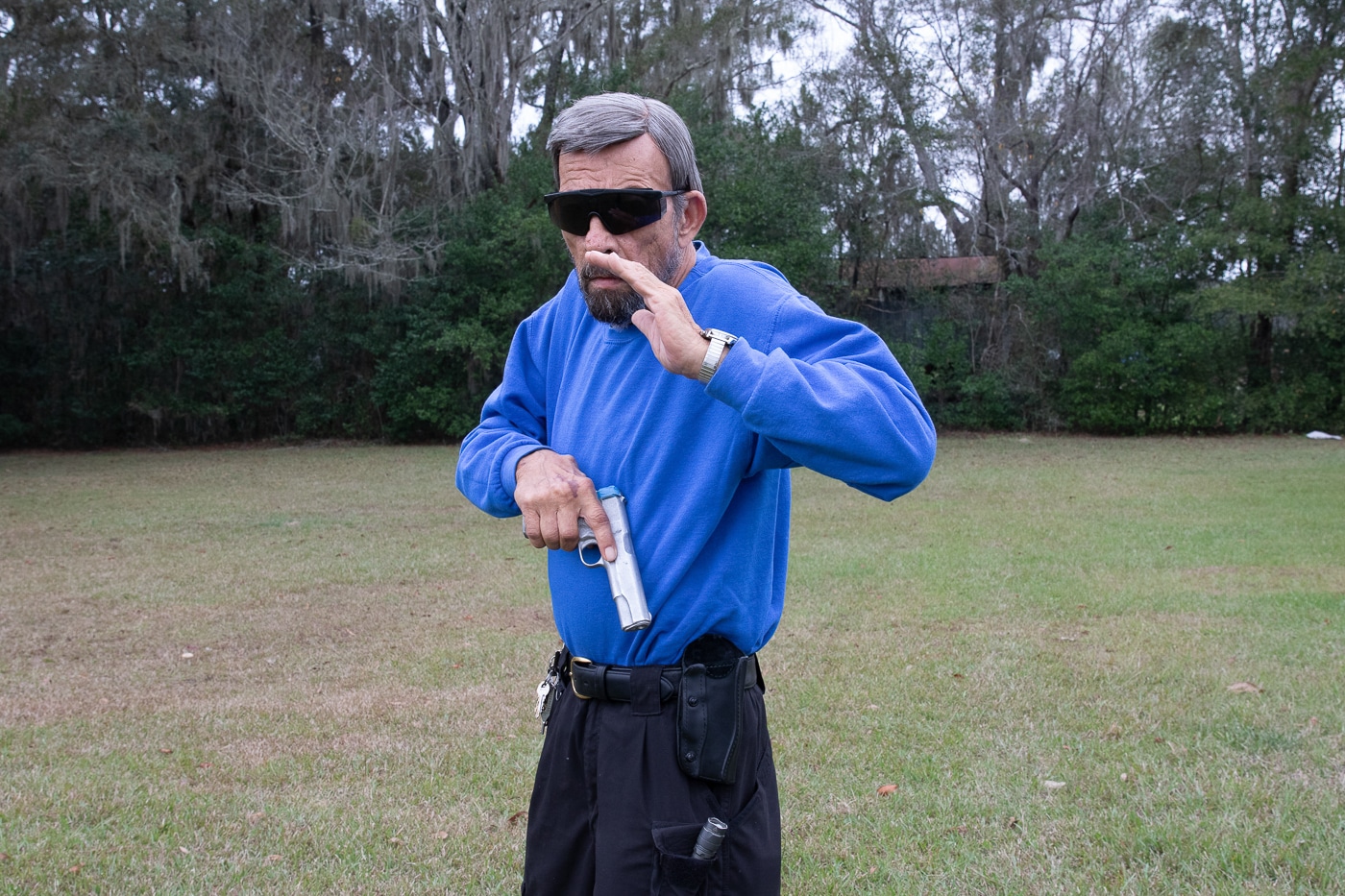
The same cross-body advantages were in place and cross draw was hugely popular for detectives there. It actually reflected reality when Jack Webb as Detective Joe Friday carried his snub-nose .38 there. Reality is reflected in the fact that his screen partners, actors Ben Alexander with a 6” revolver in the first series and Harry Morgan with a period-correct 4” in the second, also carried cross draw.
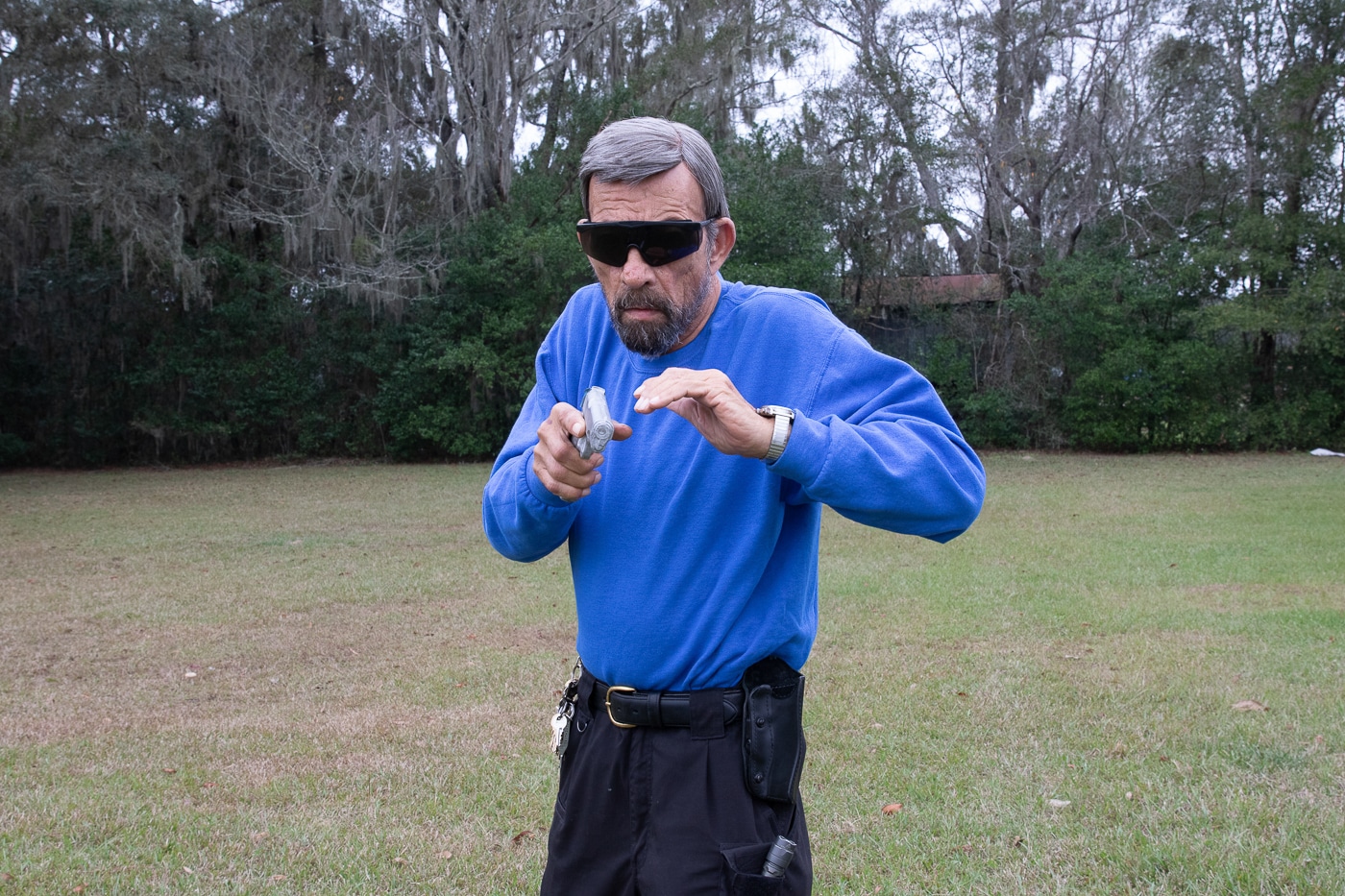
That’s about gone now. Even on the screen, the only modern TV detective I can think of who carries cross draw is on the Law and Order SVU show, where “Detective Eliot Stabler” played by Christopher Meloni carried his 9mm Glock butt-forward.
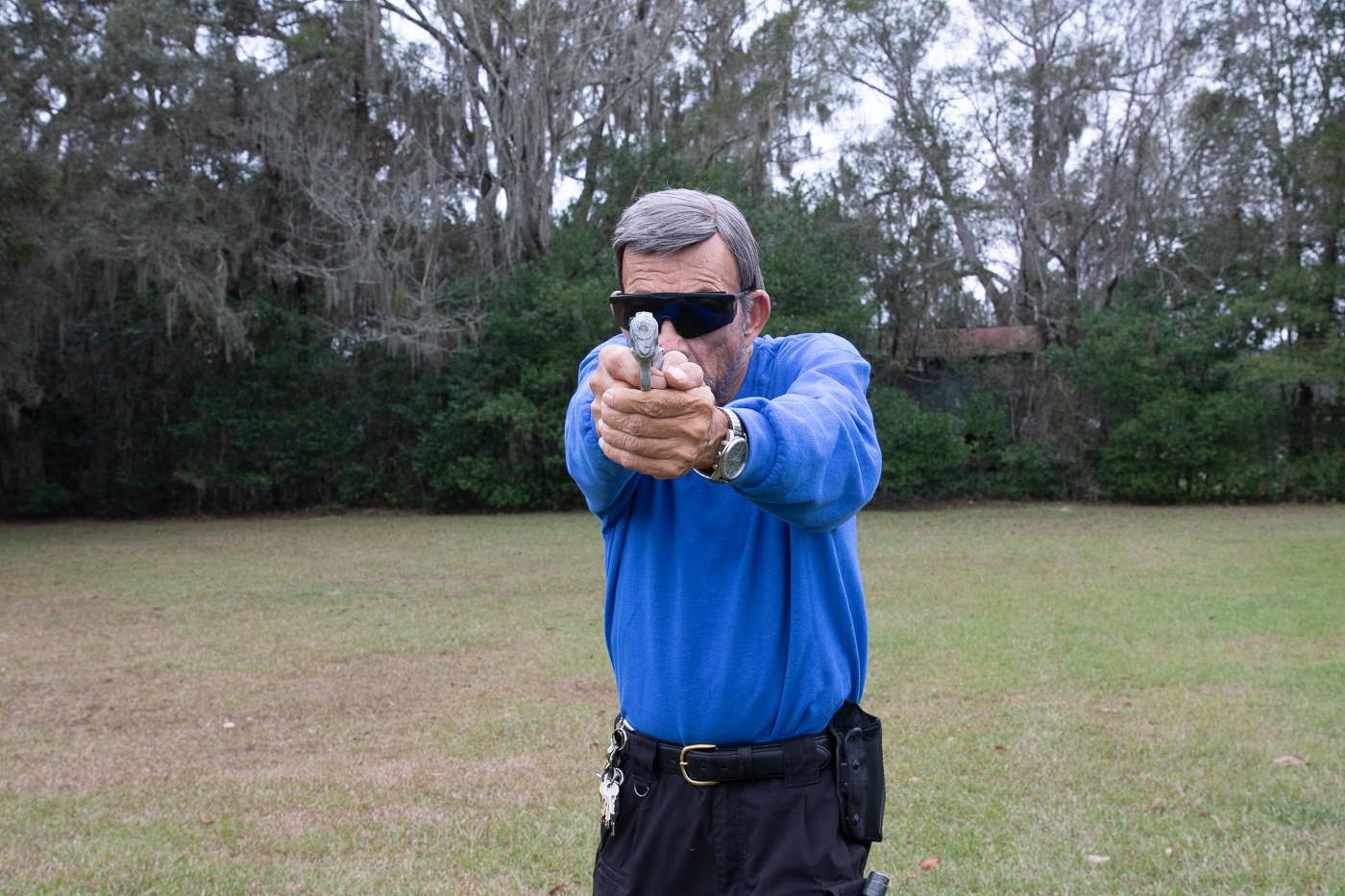
The Pros of Cross Draw
There are a variety of pros and cons to cross draw carry. Let’s highlight them now.
Cross draw is very fast from seated.
Why? For the same reasons discussed earlier: you don’t have to rock your upper body and head to the side to clear a draw path as you would with straight/strong-side hip draw.
Cross draw can be very quick from under open-front garments fastened closed.
If the bitter cold makes you button up, leave one or two buttons at abdomen level unfastened, and a right-handed male or left-handed female can spear-hand straight fingers right through the opening to grab the handgun and rip it out.
Cross draw keeps a long gun in hand from bumping your rifle or shotgun, assuming that you shoot a long gun from the same side shoulder as your strong hand.
Hunting deer in New England with rifle in hand, and on both of my African safaris, I carried my handgun slightly forward of the opposite hip, and solved that problem.
The cross draw can be an “orthopedic holster.”
Sciatica is bothering your hip on the gun hand side? A switch to cross draw may be the easiest cure, whether temporary or permanent. The late machine gun expert Peter Kokalis carried his .45 auto cross draw, because he had a shoulder injury that limited his gun arm’s range of movement to the rear but not the front. In an article titled “Tips for Senior Shooters” in the October 2022 American Rifleman, Rick Hacker wrote of successfully taking his doctor’s advice and going to cross draw while recovering from a pinched nerve in the shoulder of his gun arm.
The cross draw is extremely friendly to a weak-hand draw if your dominant hand is “out of the fight.”
Here is where the “cavalry draw” comes into its own. You turn your support hand thumb back with palm toward your body and grab the pistol grip. Lift, and rock the muzzle forward without crossing your own body. Rotate the pistol back up into firing position as you bring it to the target or the threat.
The Cons of Cross Draw
As with all things, there are potential issues with carrying cross draw. These can include:
Facing a hostile opponent at close range.
Cross draw presents the butt forward to him and may literally make it easier for him to reach than for you.
Cross draw is banned in many sports (PPC and IDPA to name two).
This is because of the dangerous potential of a shooter facing the target to cross the range officer behind him, the shooter on his holster side, and his own support arm during the draw.
If facing square to the threat, cross draw has some negatives.
It requires you to either slow down as you come into the target, or risk the gun swinging too far across the target so you have to bring it back before you can index an accurate shot.
Issues if the holster is at the opposite hip or behind it.
In cases like these, it can be extremely — even impossibly — hard for some people to reach for an emergency quick draw, depending on physical build. There are range of movement issues involved. If you are very broad-shouldered, have short arms and wide torso, or dare I say it, if you are really fat, cross draw may present a problem for you.
Demonstration of the Cavalry Draw
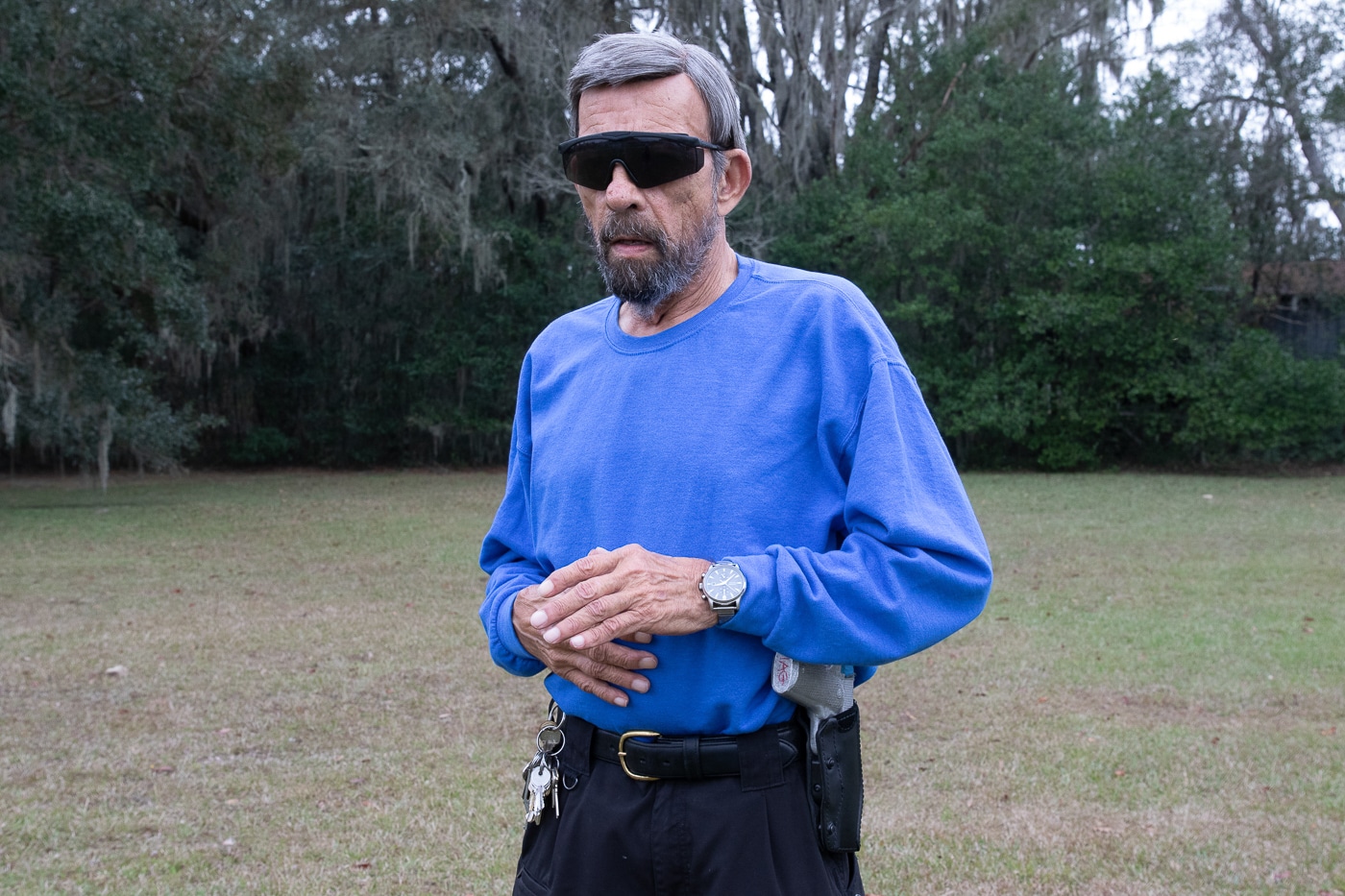
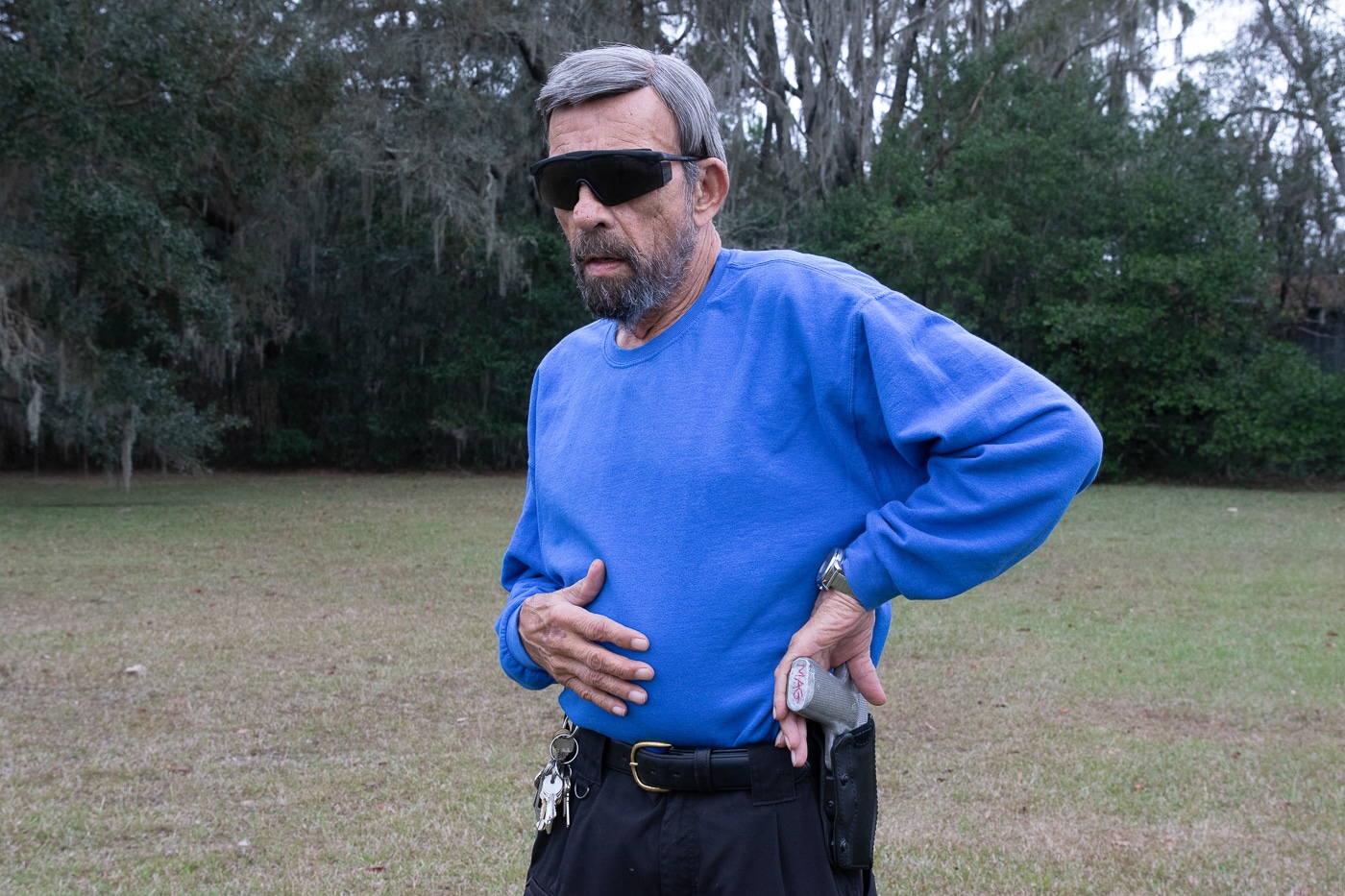
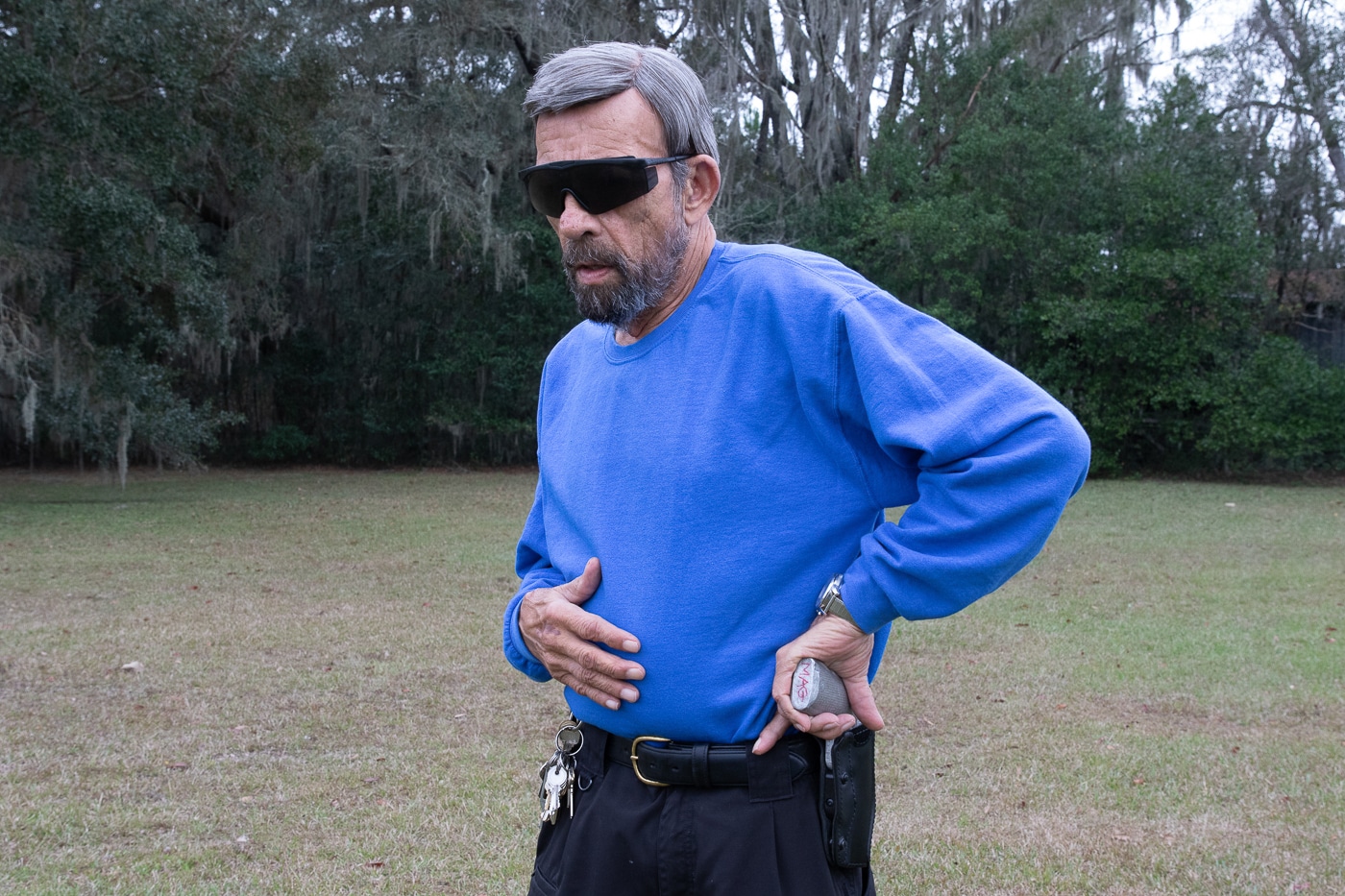
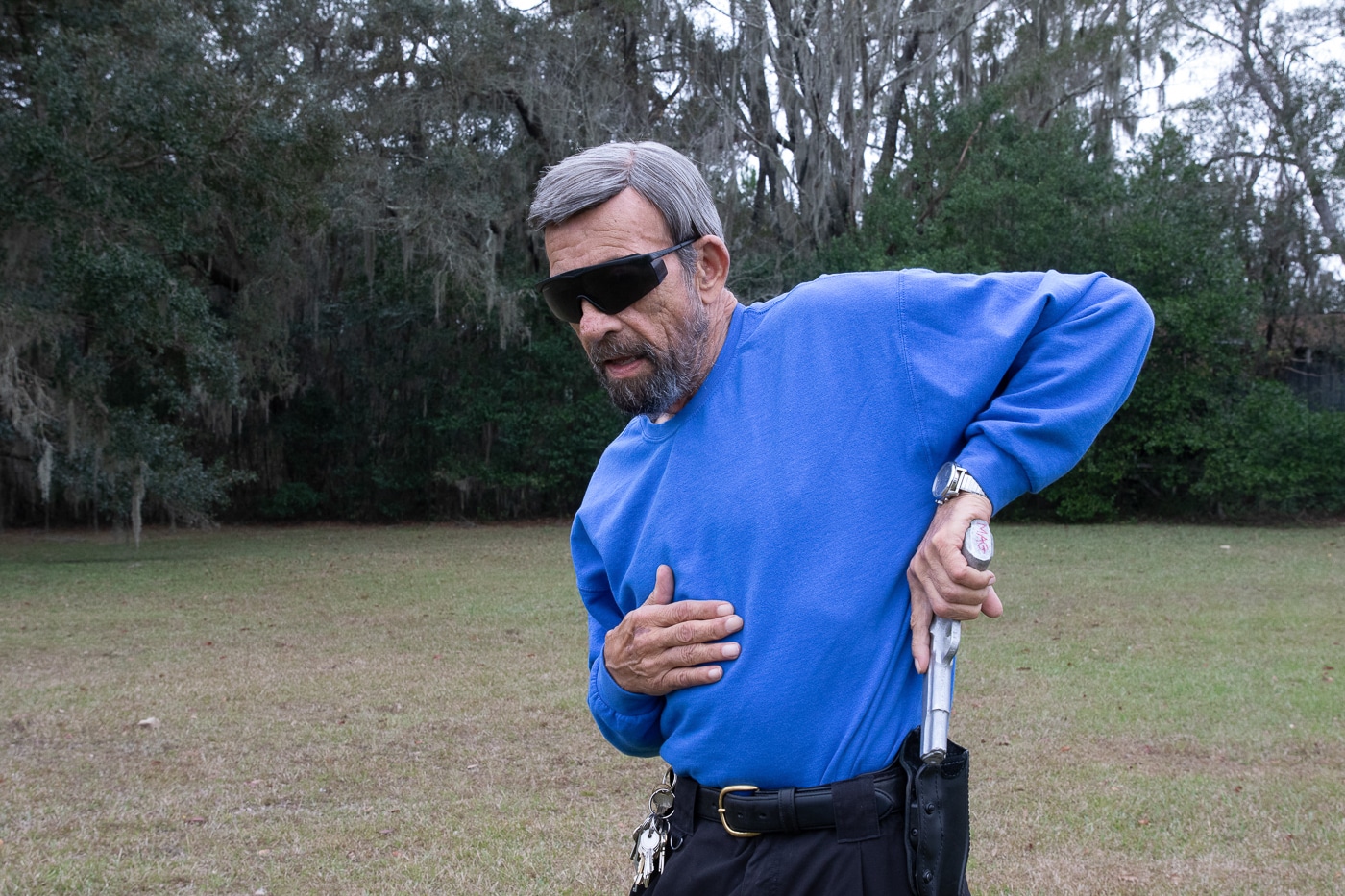
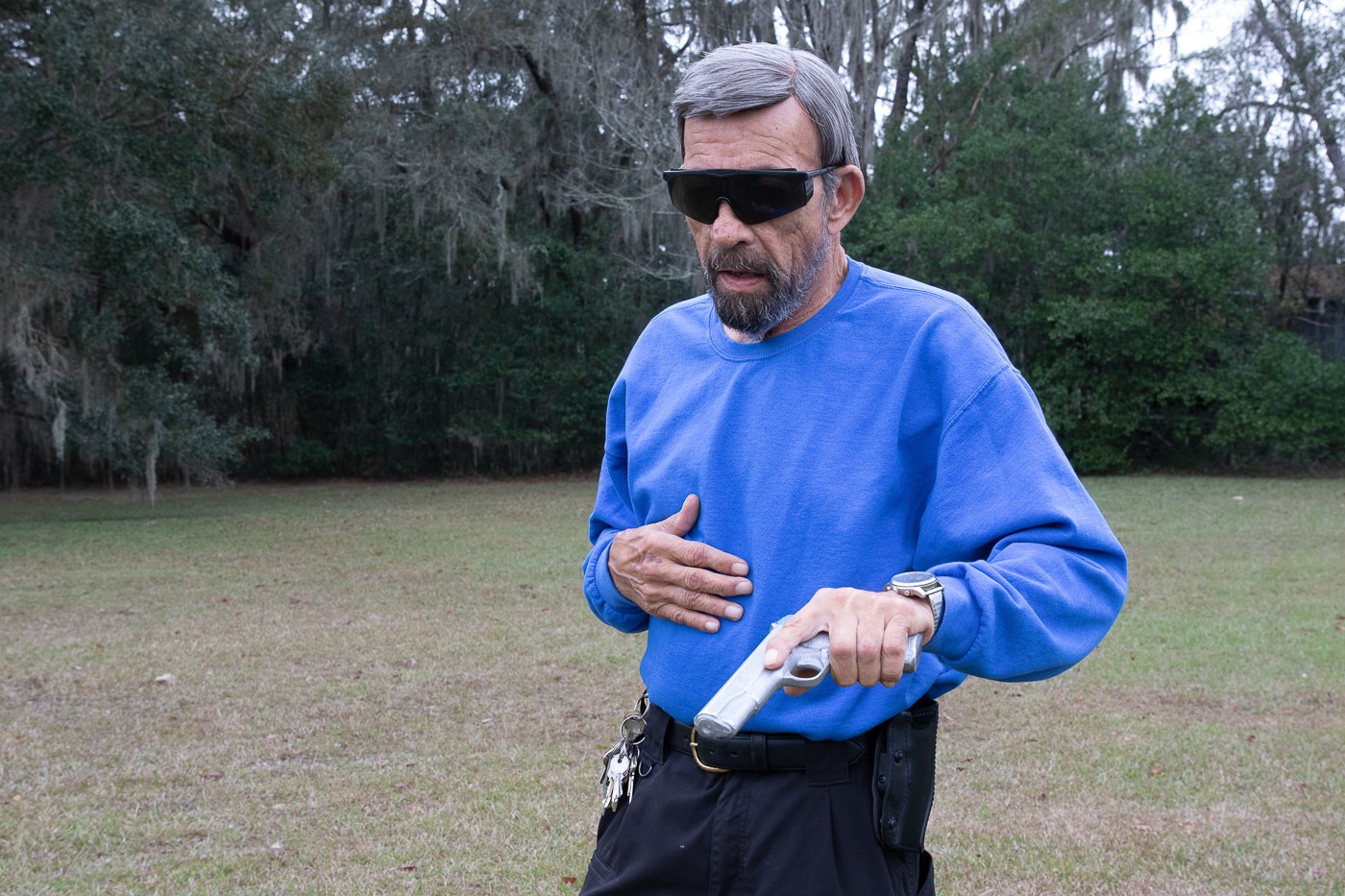
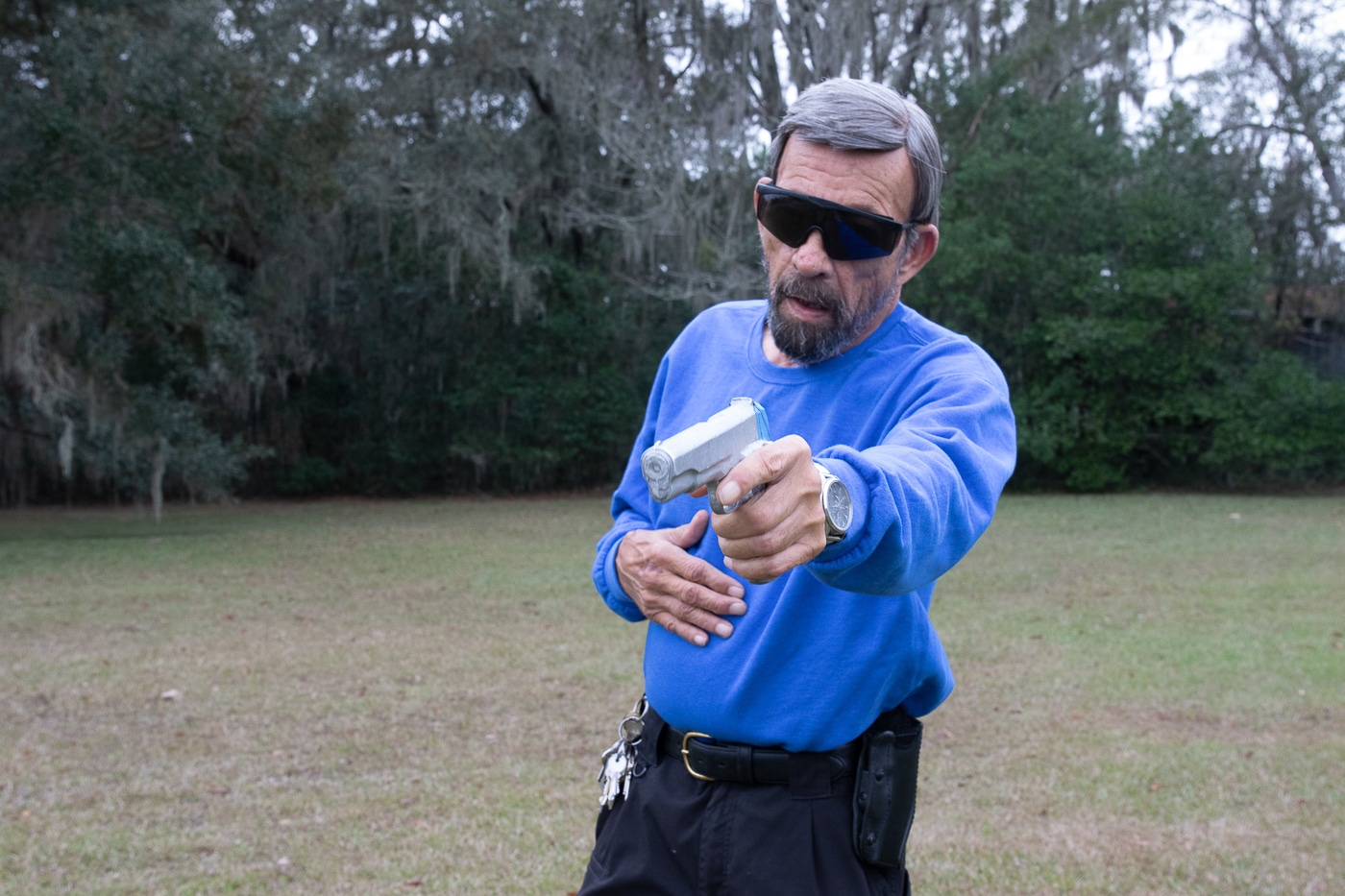
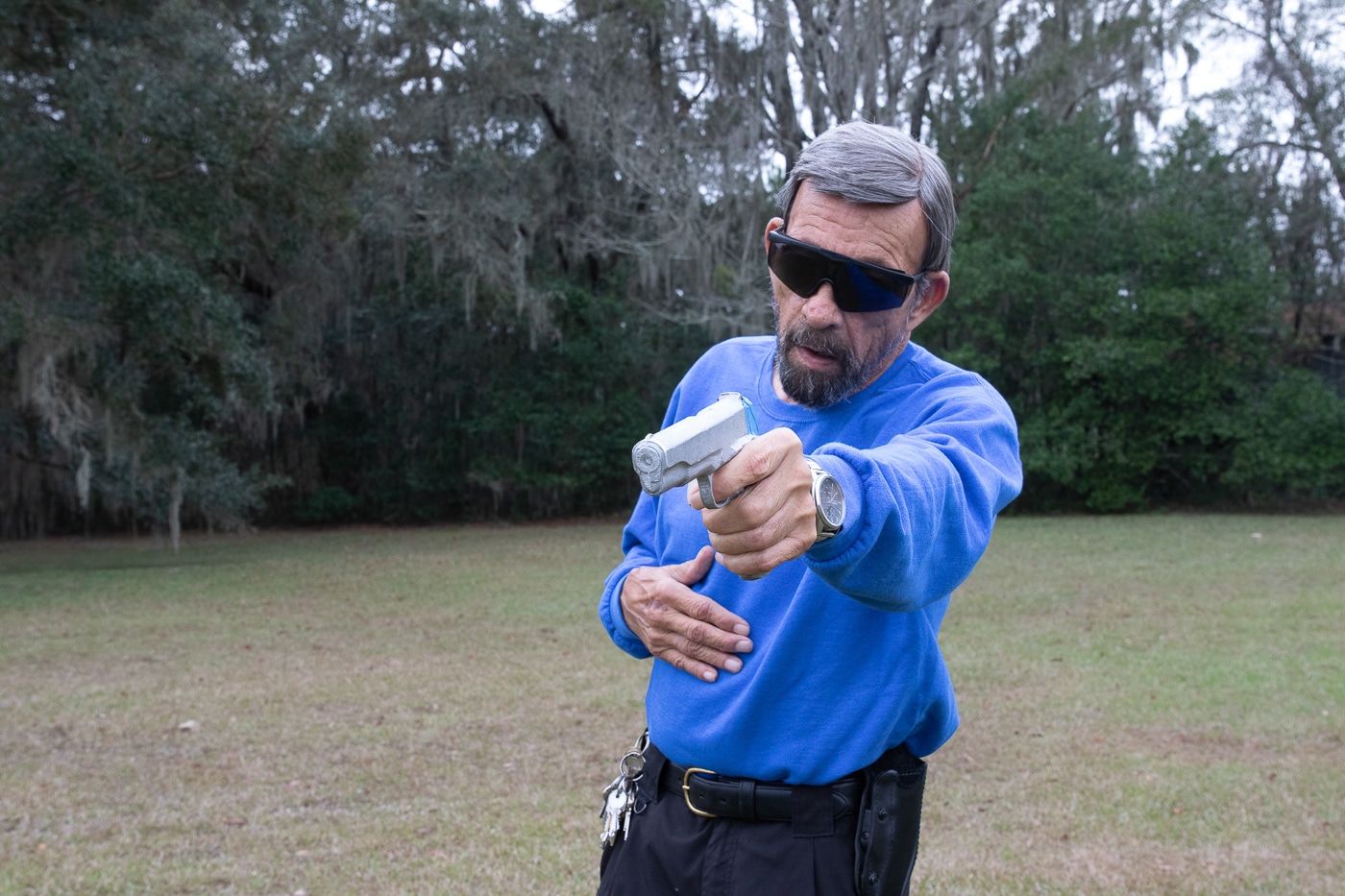
Cross Draw Remediations
In my opinion, the negatives of cross draw that caused its popularity to plunge can be remediated.
Perhaps the most important thing is to get the gun-side of your body edged toward the target before you begin the cross draw, and bring your support arm up to where it won’t be crossed by your own gun muzzle.
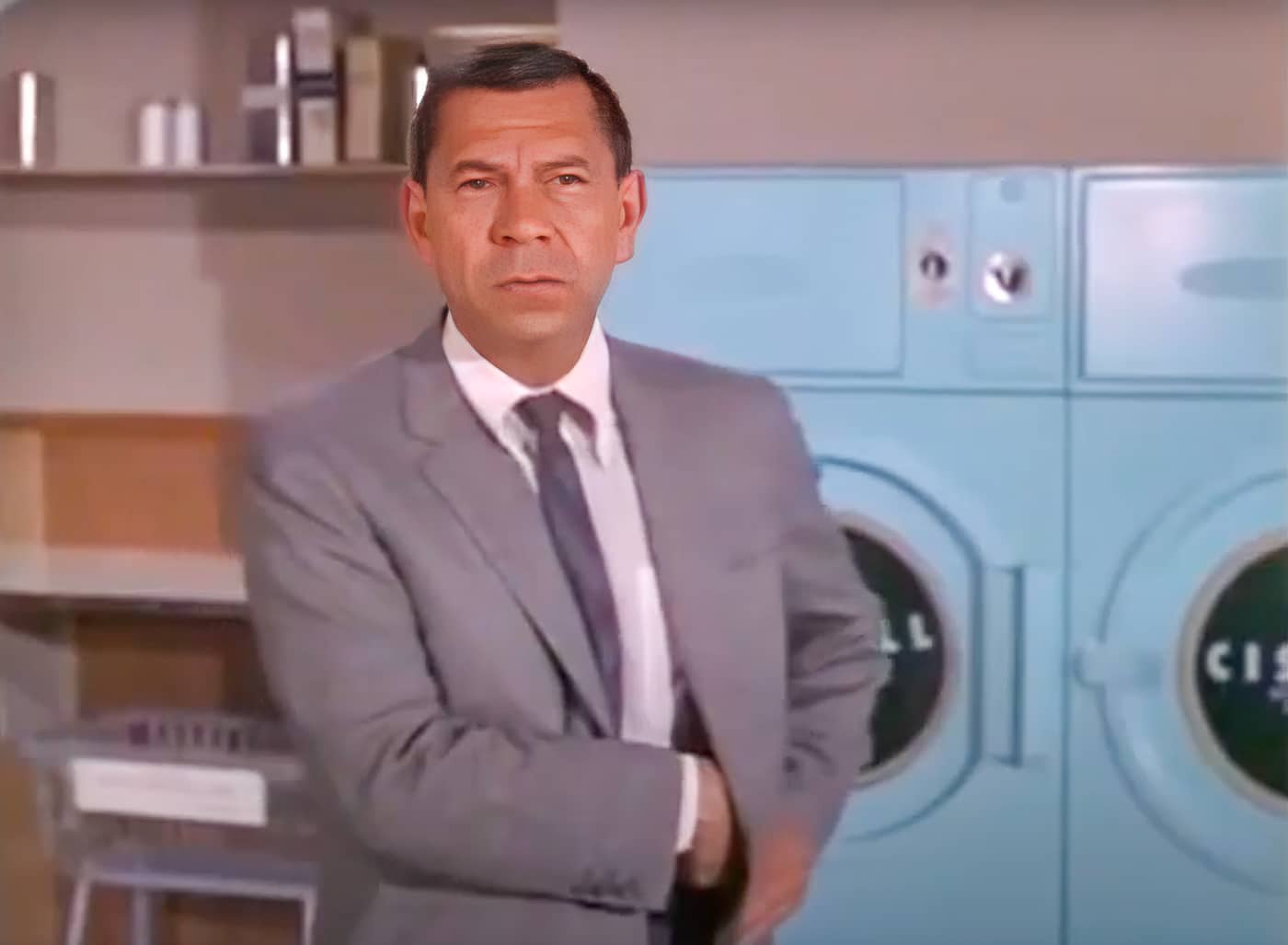
This tactic does a lot of good things:
- From this angle, the pistol comes up already indexed on the target or threat. It doesn’t swing across the threat zone but comes right up into it.
- In training and practice AND on the street, no range officers, fellow shooters or other innocent parties are crossed by the gun muzzle.
- At this angle, it will be much harder for a close-in homicidal assailant to grab your pistol.
- The raised support arm is not only clear of the gun muzzle, but in position to defend against a gun snatch, and can quickly join the firing hand for a more solid hold.
Cross draw handgun carry has fallen out of favor of late, at least in our country. However, as we’ve seen above, it has its place. Even if it isn’t your cup of tea, keep it “one pouch back in your bag of tricks” in case you find a special purpose, a “special need,” for what it has to offer.
Editor’s Note: Please be sure to check out The Armory Life Forum, where you can comment about our daily articles, as well as just talk guns and gear. Click the “Go To Forum Thread” link below to jump in and discuss this article and much more!
Join the Discussion
Continue Reading
Did you enjoy this article?

 867
867





